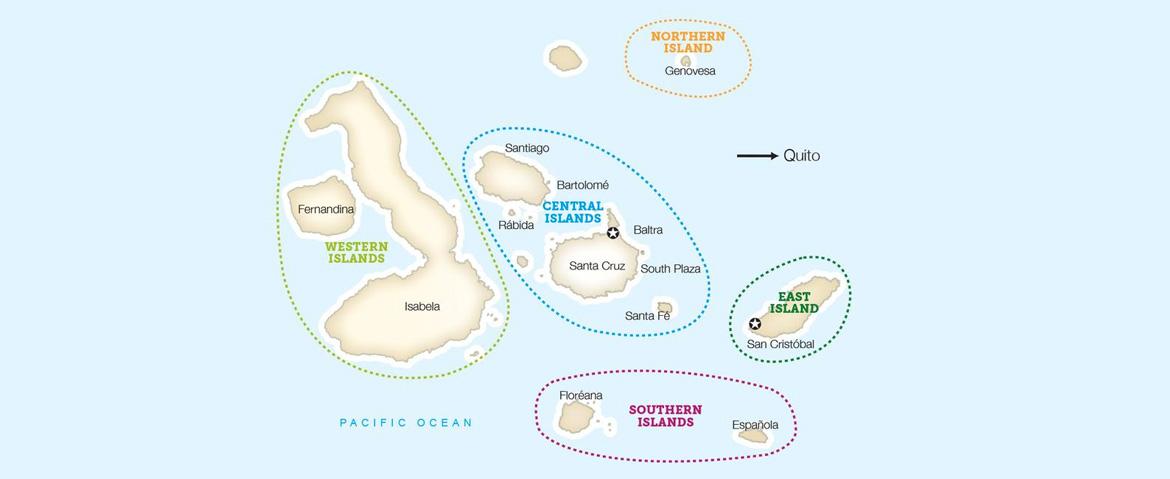



The Galapagos Islands are located in the Pacific Ocean in front of the West Southamerica coast, 600 miles away form the coast direct in front of Ecuador. For more information about Galapagos Islands check out this overview.
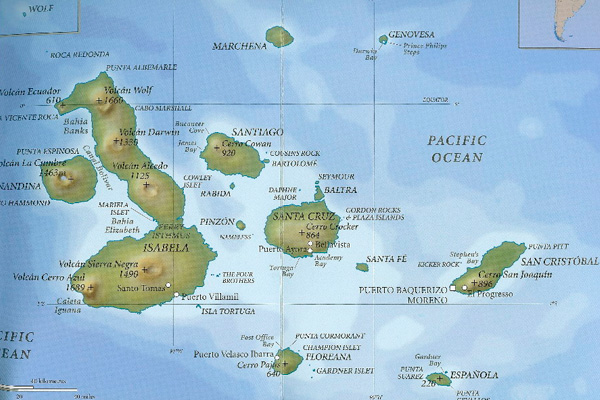
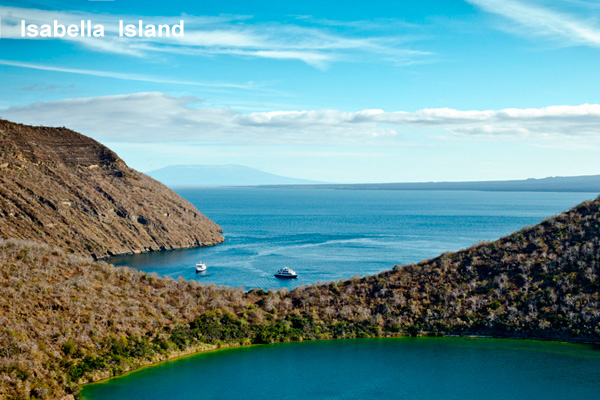
The largest island of the Galapagos Islands is over 100 kms long and extremely narrow. Six volcanoes are found on Isabela, of which two are over 1,700 meters which are Wolf and Cerro Azul. The most commonly visited sites are Punta Garcia to watch for the Flightless Cormorants, Volcan Alcedo for Land Tortoises, Tagus Cove for Blue Footed Boobies, Flightless Cormorant, Galápagos Penguins and Marine Iguanas, and Urbina Bay for Marine Turtles.
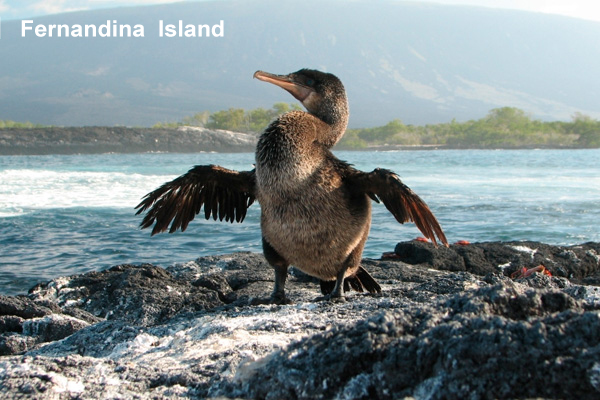
Located on the west side of Isabela Island, it is the western most island in the Galapagos and is one of the most volcanically active. The main volcano is 1,500 meters high with a diameter of 6.5 kms and a depth of about 800 meters. Subject to weather conditions, the following islands may be seen from here: Santiago, Santa Cruz, Baltra, North Seymour and Rábida. Punta Espinoza is visited to see the black lava rock, mangroves, a variety of herons, Yellow Warblers, Pelicans, Frigates, Mangrove Finch, petrels, shearwaters and Marine Iguanas.
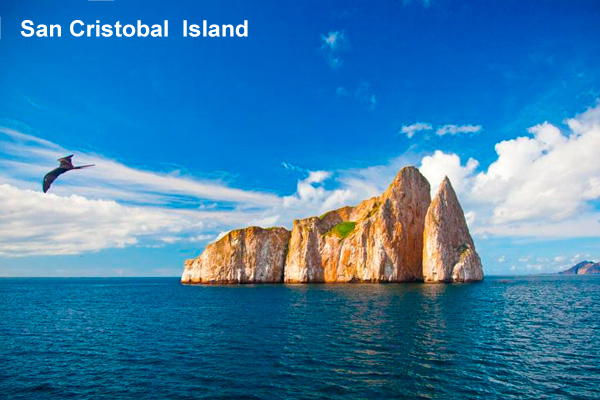
Home to the capital and administrative center of the Galápagos Islands, Puerto Baquerizo Moreno, located on the west side of the island. The airline TAME operates from the airport. The two main visitor sites, are Kicker Rock and Isla Lobos. On approach to Puerto Baquerizo it is not unusual to see a school of dolphins swimming alongside your yacht.

Located to the north-west of Santa Cruz Island, the island is famous for its earlier human use, such as attempts to mine salt and its natural resources: a flamingo lagoon, lava flows at Sullivan Bay and fur seal grottos, to name a few. James Bay is the most visited point on the west side of the island for its salt crater (Puerto Egas), Sugarloaf Volcano (450 m), fur seal grottos and Espumilla Beach with its flamingo lagoon. On the east side of Santiago you will visit Sullivan Bay famous for its conical volcano and for the study of various types of lava rock, some of which is as young as 90 years.
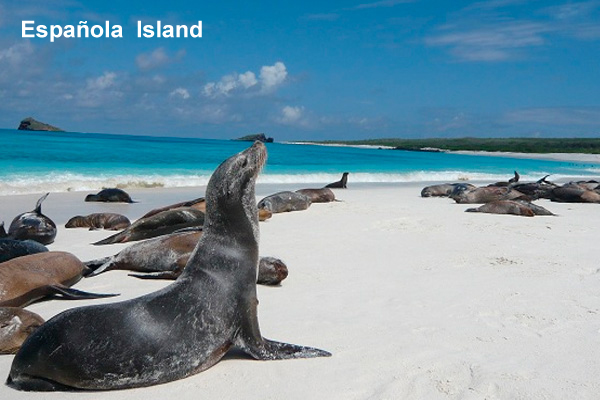
The southernmost island and the only nesting site of the Waved Albatros. At Punta Suarez, see mockingbirds, Blue-footed and Masked Boobies, Darwin Finches, Galapagos Doves and Hawks, red and green marine iguanas, sea lions and the famed Blow Hole.
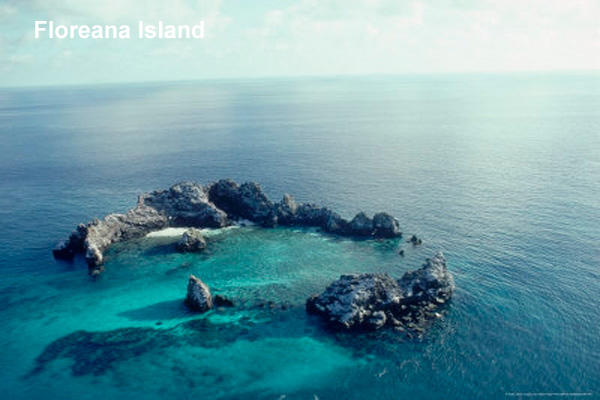
Punta Cormorant: more than 50 volcanic cones in a 80 mile area, pink flamingos, clear water and interesting coral formations, make this a perfect spot for snorkeling. Post Office Bay, where 18th century whalers used a barrel as an unofficial mail drop, this habit continues today.
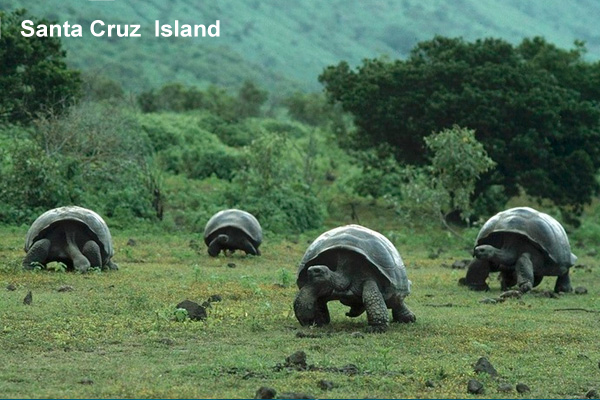
The central island in the Galapagos and home to the main port, Puerto Ayora and the Charles Darwin Research Station, which you will visit during your tour. The largest town in Galapagos hosts numerous hotels, restaurants, shops, a post office, a small supermarket and two diving companies. A 21/2 km walk will bring you to one of the best beaches in the Galapagos, Tortuga Bay. Trips can be made to the "Parte Alta", or the high ground behind Puerto Ayora to visit the incredible lava tunnels, the tortoise reserve at Bellavista and the Gemelos, two twin craters. A paved road now crosses the island connecting the port with the main airport in the archipelago, used by the airline TAME, on the island of Baltra. A five minute boat crossing between Baltra and Santa Cruz completes the bus journey.
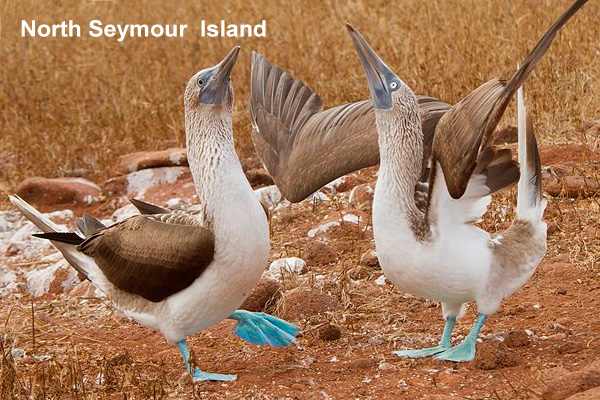
Located on the west side of Isabela Island, it is the western most island in the Galapagos and is one of the most volcanically active. The main volcano is 1,500 meters high with a diameter of 6.5 kms and a depth of about 800 meters. Subject to weather conditions, the following islands may be seen from here: Santiago, Santa Cruz, Baltra, North Seymour and Rábida. Punta Espinoza is visited to see the black lava rock, mangroves, a variety of herons, Yellow Warblers, Pelicans, Frigates, Mangrove Finch, petrels, shearwaters and Marine Iguanas.
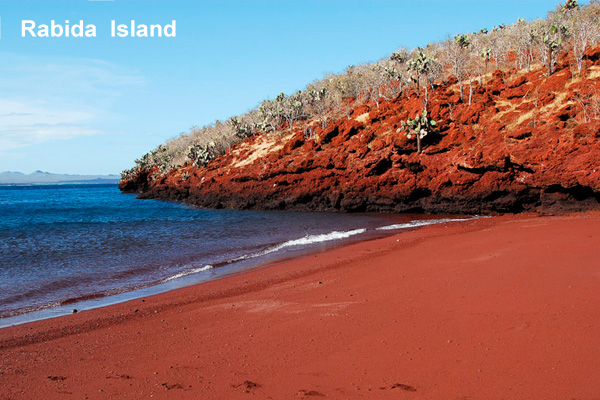
A small island just over 2 kms in width and 400 meters at its highest point, located to the south of Santiago Island. Rábida is known for its unusual red colored beaches. The vegetation consists mainly of Opuntia Cactus, Palo Santo trees and scrubby bushes. Upon your wet landing you will probably see various sea lions and after a short hike you will reach the lagoon to see flamingos and pelicans.
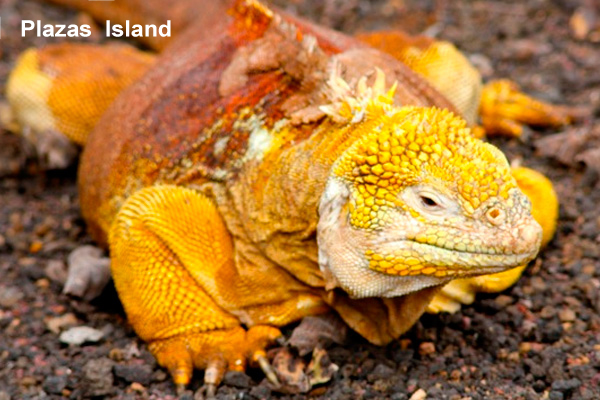
Located directly east of Santa Cruz Island this is the smallest of the large islands at 1 km by 130 meters. After a dry landing your hike will take you from the shore, which is usually covered in sea lions, to the other side of the island to see the Land Iguanas. On your return, you may see various Sea Iguanas.
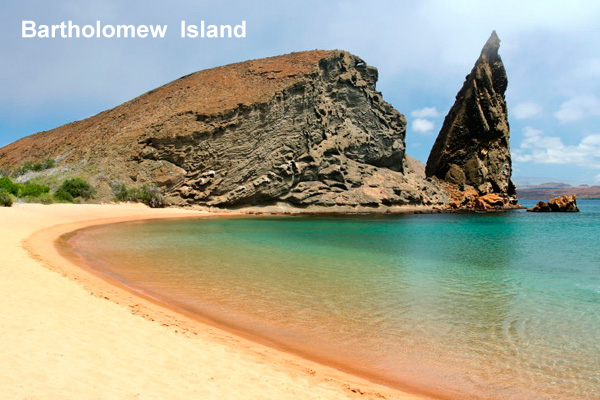
This is probably the most photographed island in the Galapagos due to its 350 feet high summit and fabulous 360° views, which is reached after a 60 meter hike Subject to weather conditions, the following islands may be seen from here: Santiago, Santa Cruz, Baltra, North Seymour and Rábida. The best view is from the PINNACLE ROCK, rising 70 meters from the cove below where your yacht is probably anchored. The main attractions are a small colony of the indigenous Galapagos penguin and a colony of sea lions, both found in the cove where you will make a wet landing. Behind the beach it can be found the red and white mangrove, salt bushes, morning glory and the prickly pear cactuses. Other animals that may be seen here are the Great Blue Heron and possibly sea turtles as they lay their eggs from January to March.
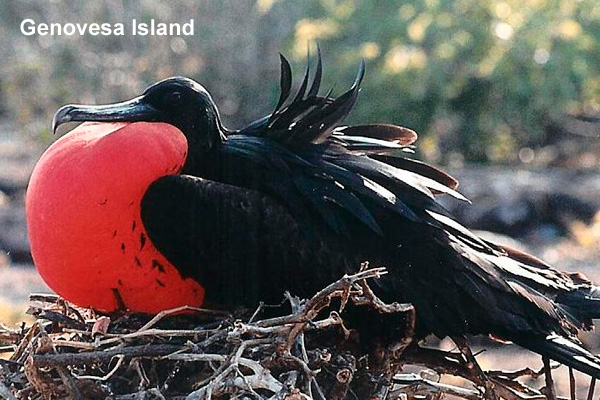
A small island (10.5 km²) in the shape of a horseshoe - the interior bay is an old imploded volcano. A wet landing on Darwin Bay beach starts your tour with colonies of Frigates, Red Footed and Masked Boobies. Just behind the beach you will see inland tide pools and outcrops of black rock and salt bushes, frequented by feeding Wandering Tattlers, Turnstones, Whimbrels, Lava Gulls and Fiddler Crabs. Not so common but still seen are the Yellow-crowned, Lava and Black-crowned Night Herons. Flying around the cliffs you may see Swallow-tailed Gulls, and on the beach a Yellow Warbler. Your second visit today will be to Prince Phillip's Steps on the south tip of Genovesa. This is the major breeding ground for the tree loving Red Footed Booby and the ground Masked Booby, whose breeding season is from September to July. This is also home to four species of the finch; the Large Ground Finch, the Sharp-beaked Ground Finch, the Large Cactus Finch and the Warbler Finch. Genovesa is also home to the indigenous Galapagos Mockingbird and to the Galapagos Dove. If you're lucky, you might even see a Short Eared Owl. Time permitting you will snorkel in the afternoon in on the west side of Darwin Bay.
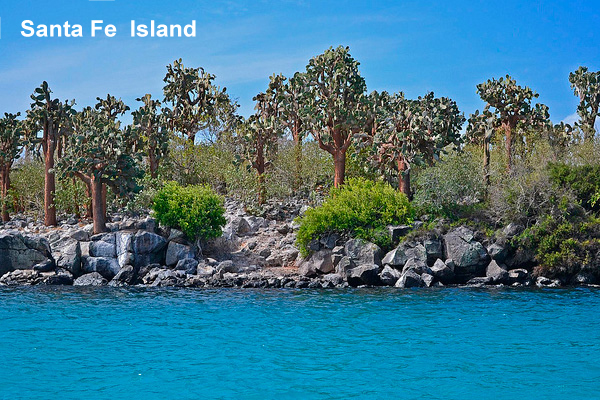
This may well be the oldest island in the Galapagos. You will anchor at one of the most beautiful and most sheltered bays in the archipelago. Some of the best snorkeling is here due to crystal clear and shallow waters. Certainly one of the best locations for swimming with sea lions and for a glimpse of the Galapagos White-tipped Shark and a sea turtle. After a wet landing you will walk up to a nearby cliff to see the land iguanas through an area of Opuntia Cactus. Other animals present are the Galapagos Hawk, owls, Frigates, Pelicans, Manta Rays and mockingbirds. It pays to do your research before planning a trip. Find information about the Galapagos Islands from our information guide at Last Minute Galapagos Deals. See why the islands are considered to be one of the best and most exotic tourist attractions in the world. Choose the best deals and travel packages for a trip to the islands.

